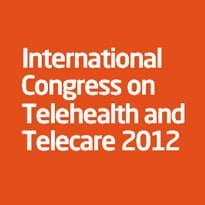The whole systems demonstrator project failed to identify any cost savings in regards to hospital activity, an analyst has revealed.
Peer reviewed results of the randomised control trials have yet to be released.
However, Adam Steventon, senior research analyst at the Nuffield Trust, spoke about some aspects of the WSD programme at the King’s Fund International Congress on Telehealth and Telecare 2012 last week.
He said an observed reduction in emergency admissions to hospital was due to an increase in admissions among the control group, rather than a drop in admissions for those on telehealth and telecare.
Indeed, he said there was a noticeable increase in hospital use amongst the control group in the first few months of the trial. “If that increase did not occur, we would not have concluded that telehealth reduces admissions,” Steventon explained.
The Department of Health set up three WSD projects in June 2009 to assess the benefits and impacts of telehealth and telecare technology on the NHS, social care services, patients and carers.
The government heralded ‘early headline findings’ of the trials, including a 20% reduction in emergency admissions, when launching its 3millionlives campaign to stimulate the market for telehealth over the next five years.
However, Steventon’s slides showed that the control and telehealth groups had similar rates of A&E admissions in the three years before the trial. After the trial started, admission rates amongst the control group rose from 0.12 admissions per person to 0.18.
In contrast, the admission rate for those on telehealth did not increase, creating a 20% difference in emergency admissions for the groups.
Steventon said researchers did not know why the increase occurred, but it was possible that patients who were not given an intervention became anxious and “ended up in A&E”.
He also said there was “no evidence that telehealth is cost reducing over the first 12 months of the trial when looking at hospital activity” and put this down to “too much noise in the data”.
Stan Newman, the principal investigator on the WSD project, told the same King’s Fund event that the greatest cost savings identified by telehealth and telecare trials in the US were related to a reduction in transport costs.
However, there was also evidence that telehealth and telecare could increase health service usage as people’s health was being monitored much more closely.
“If you save lives it ends up costing money. That’s a real tension, because people who live longer require special care,” added Newman.
He said an assumption that cost returns might be realised within a year could be wrong and this may be a problem for NHS organisations operating on annual budgets.
Newman also revealed that the programme showed no difference in physical or mental quality of life between those using telehealth and those getting their usual treatment.
He said this appeared to be a negative outcome, but it disproved a concern that the use of telehealth would lead to patients becoming socially isolated and a having a reduced quality of life.
Newman said it was a judgment call on whether the findings of WSD in relation to emergency admissions were positive or negative, and it depended on expectations.
“It’s a complex study with a complex intervention and complex outcomes,” he said. “People need to see it (the peer reviewed paper) to decide on the value.”
At the start of the main part of the three day event, care minister Paul Burstow said he was keen to see the results published, and blamed the BMJ for failing to get them out.

